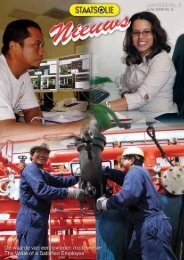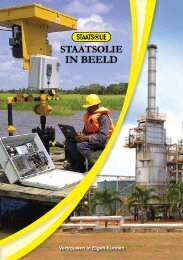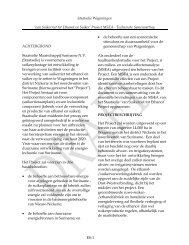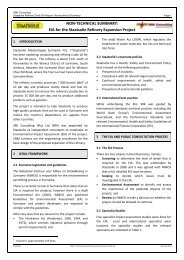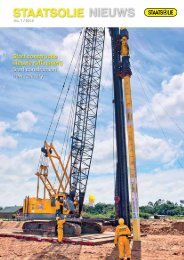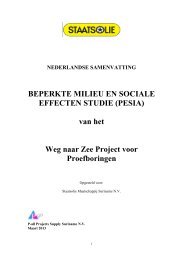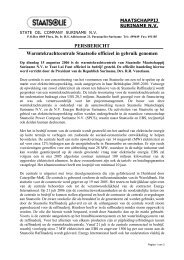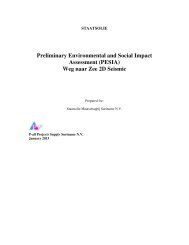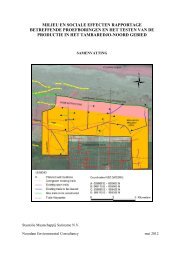concept EIA-rapport - Staatsolie
concept EIA-rapport - Staatsolie
concept EIA-rapport - Staatsolie
Create successful ePaper yourself
Turn your PDF publications into a flip-book with our unique Google optimized e-Paper software.
SRK Consulting: Project No: 439414 <strong>Staatsolie</strong> Pipeline <strong>EIA</strong> – Draft <strong>EIA</strong> Report Page 53<br />
Box 6-1: 'Sensitive' and 'No-Go' Areas according to Goodland (2005)<br />
1. Areas supporting many people who would have to be involuntarily displaced and resettled (e.g.,<br />
a town or several villages)<br />
2. Areas used by Indigenous Peoples or vulnerable ethnic minorities<br />
3. Protected areas (e.g., UN World Heritage sites; UN Biosphere Reserves; Ramsar sites.<br />
4. Areas meeting IUCN’s categories I thru VI, and marine categories I-V (e.g., fishing or fish<br />
breeding reserves). Proposed or recognized protected area; Areas maintaining conditions vital<br />
for protected areas (e.g., watersheds, buffer zones).<br />
5. Areas critical for rare, vulnerable, migratory or endangered species.<br />
6. Areas with cultural property: archeological, historic or sacred sites<br />
7. Outstanding aesthetic value, beauty spots<br />
Source: Goodland (2005)<br />
Overall size or footprint of pipelines and associated facilities / operations<br />
The overall size and footprint of the pipelines and associated facilities is limited compared to<br />
pipelines that cross hundreds of kilometres and country boundaries, as:<br />
• The proposed pipeline corridor is less than 7 km long;<br />
• Storage facilities and terminals at the start and end of the pipelines largely exist, and only minor<br />
modifications are required for the operation of the pipelines (e.g. the installation of pumps and<br />
pig launchers);<br />
• The entry / exit points of the pipeline, where drilling will take place, are generally accessible via<br />
existing roads that can accommodate construction vehicles, minimising the need for and impact<br />
of new access and service roads; and<br />
• The pipeline pumps have a relatively low pump capacity.<br />
Based on the above observations, SRK is of the opinion that many impacts of the pipeline are likely<br />
to be of low significance, which will be reflected in the potential impacts identified as well as the type<br />
and scope of specialist studies undertaken for the <strong>EIA</strong> (see Sections 6.1.1 and 6.1.2 below).<br />
6.1.1 Environmental issues identified for the project<br />
Based on the professional experience of the <strong>EIA</strong> team, the following key environmental issues –<br />
potential negative impacts and potential benefits – have been identified:<br />
• Socio-economic –<br />
- Possible socio-economic benefits from job creation during construction and operation<br />
(associated with maintenance) of the pipelines and the improvement in the security of<br />
Suriname’s automotive diesel and gasoline supply;<br />
- Possible socio-economic costs to businesses adjacent to the pipeline route if structures<br />
(e.g. jetties) are affected by the pipeline or commercial activity is disrupted during<br />
construction;<br />
• Flora and Fauna – Potential damage to habitats along the pipeline route where vegetation is<br />
cleared for drilling pads or very limited trenching; and<br />
REUT/DALC 439414_<strong>Staatsolie</strong>Pipeline<strong>EIA</strong>_Draft <strong>EIA</strong> Report_Final June 2012




